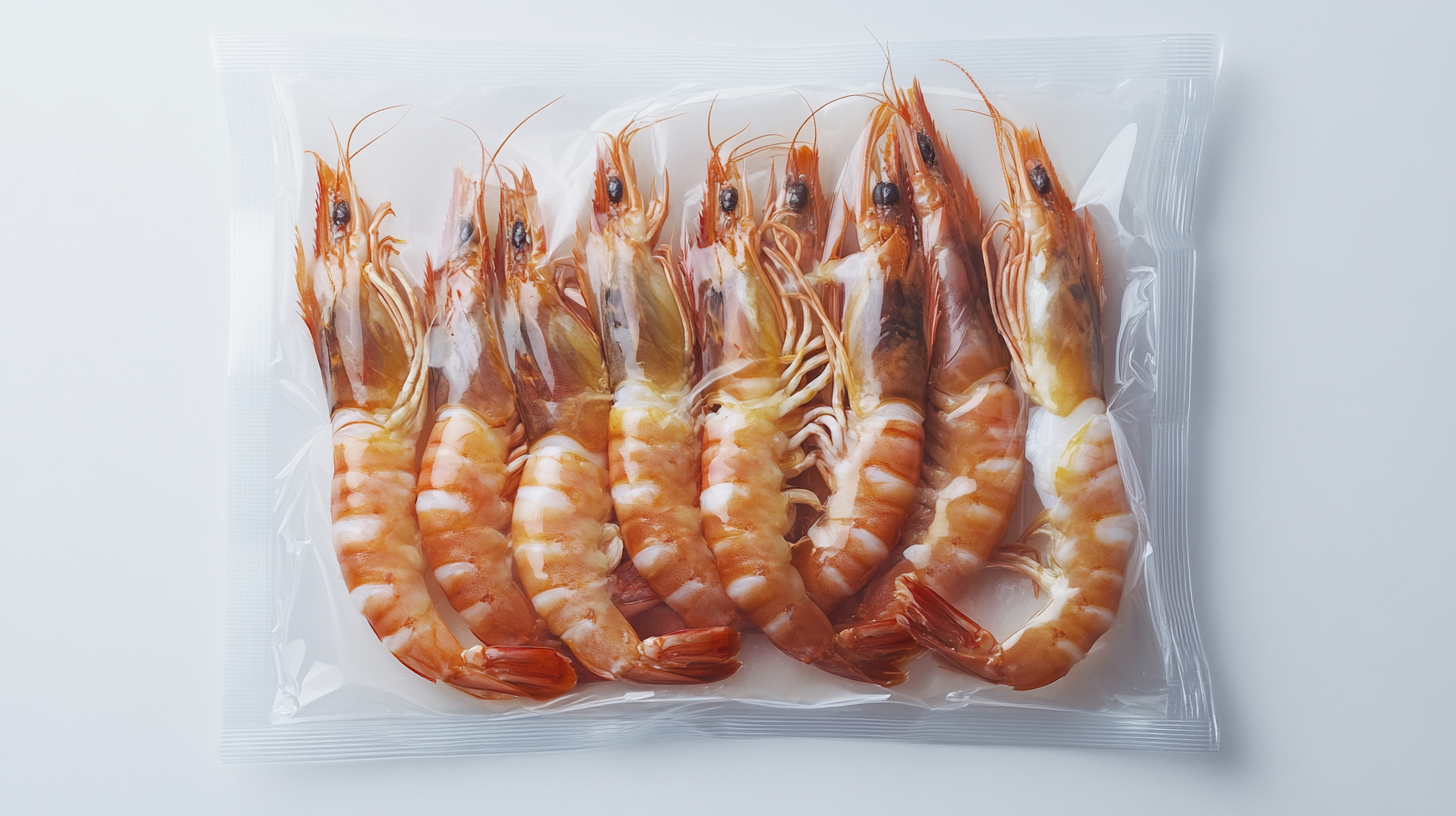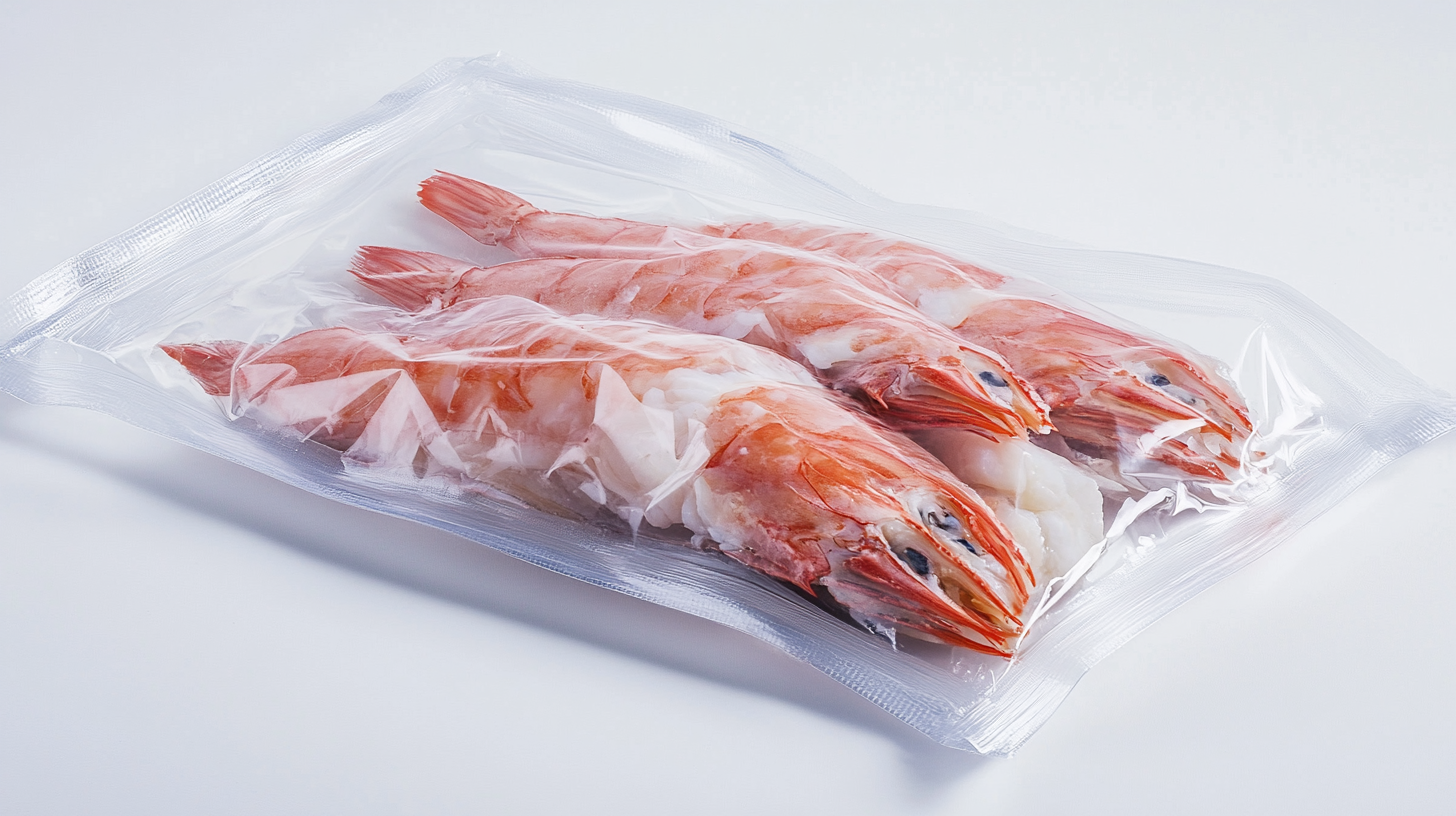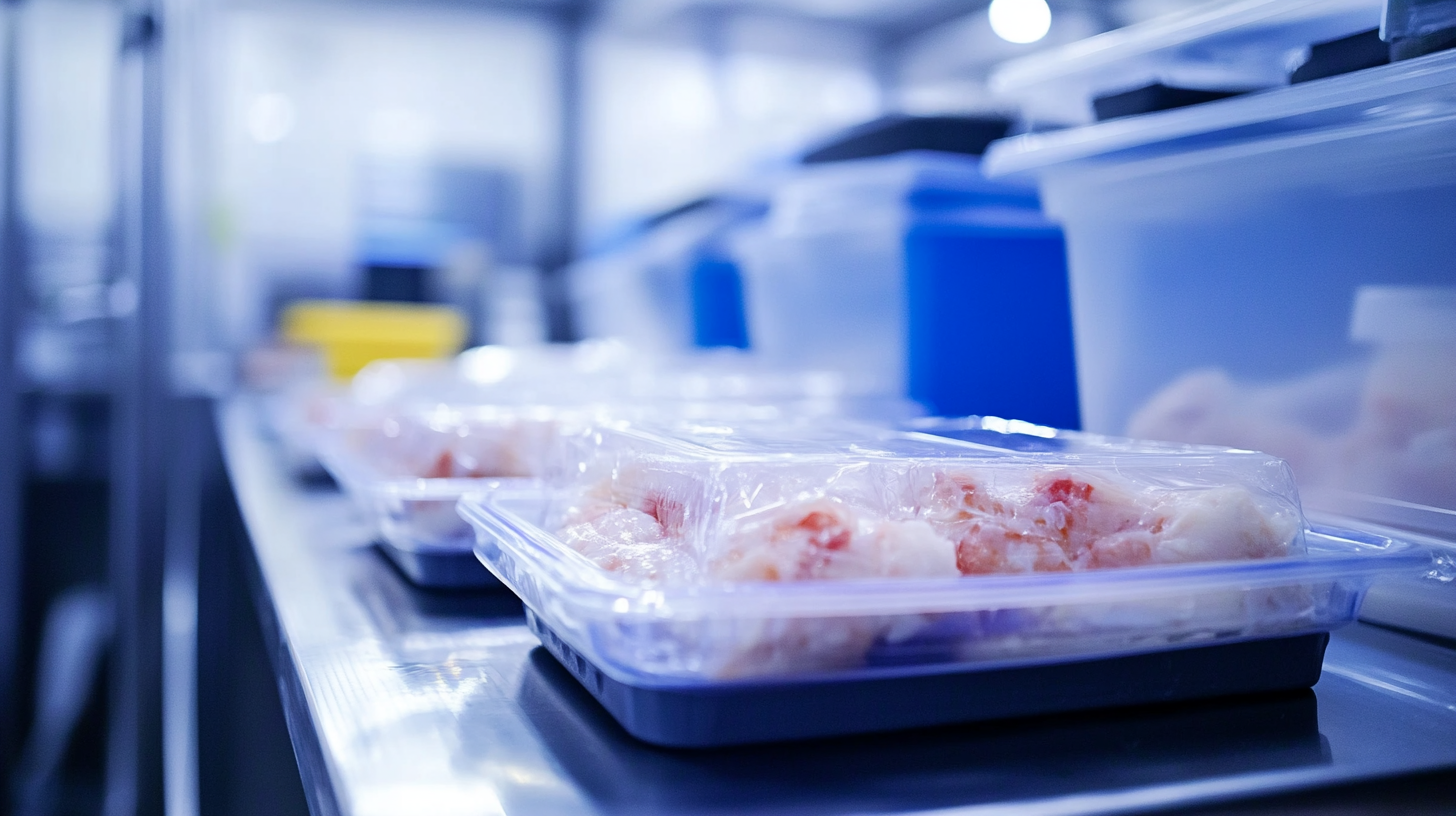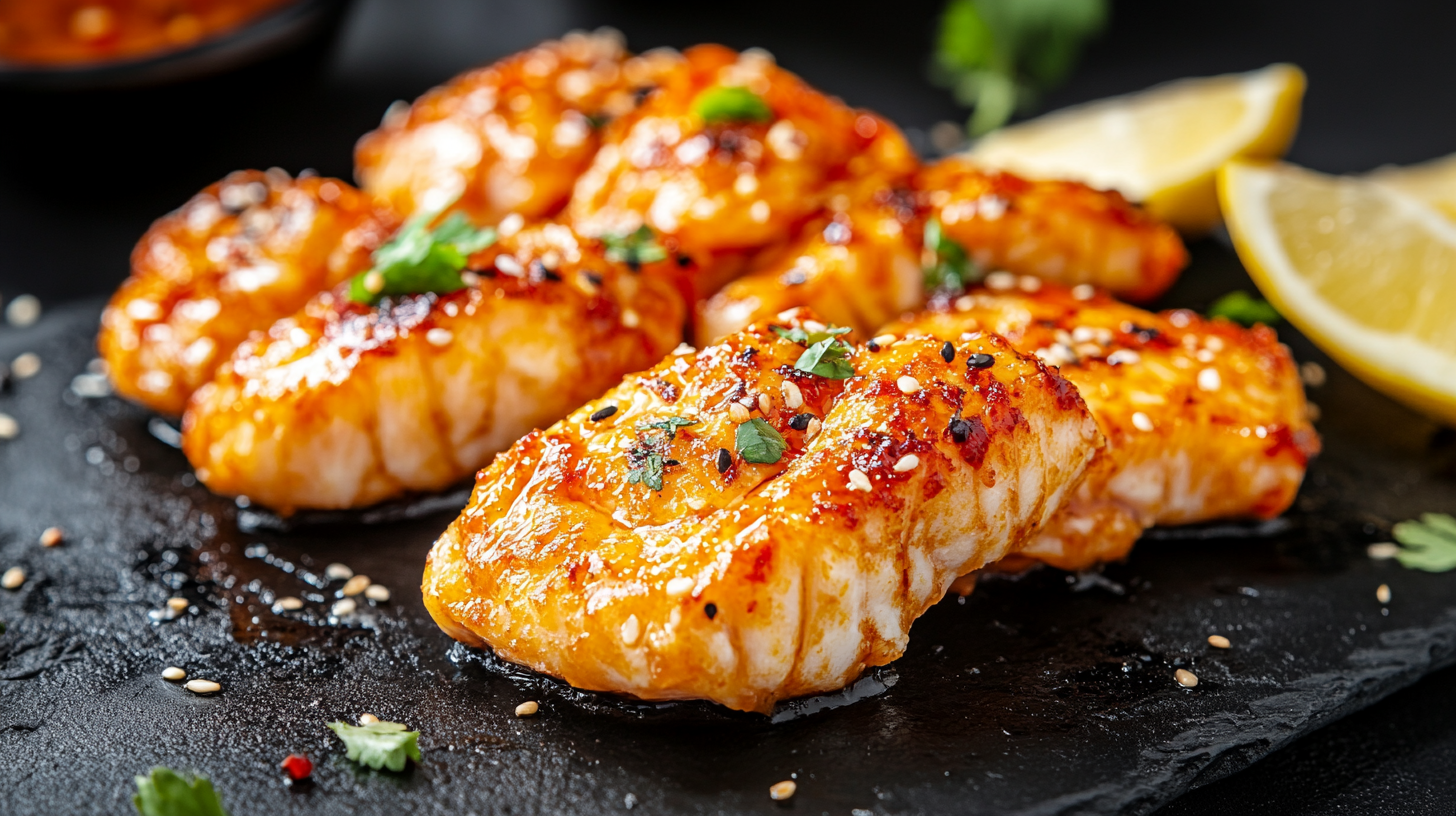Essential Tips for Sourcing High-Quality Frozen Seafood Packaging Solutions
The global demand for high-quality frozen seafood packaging has surged in recent years, driven by the growing consumer preference for convenience and the increasing awareness of food safety and sustainability. According to a recent report from the Seafood Industry Association, the frozen seafood market is projected to reach $25 billion by 2025, with a compound annual growth rate (CAGR) of 4.5% between 2020 and 2025. This growth can be attributed to advancements in packaging technology and the rising importance of maintaining the freshness and quality of seafood during transportation and storage.
As this market expands, sourcing the right frozen seafood packaging solutions becomes crucial for manufacturers and suppliers aiming to meet diverse consumer needs while adhering to stringent regulations. Effective packaging not only helps in extending shelf life but also plays a vital role in preserving flavor and nutritional value. Reports from the Food Packaging Institute highlight that approximately 30% of seafood spoilage can be attributed to inadequate packaging. Therefore, understanding the essentials of frozen seafood packaging is imperative for businesses looking to thrive in this competitive landscape while ensuring their products meet the highest standards of quality and safety.

Key Features to Look for in Frozen Seafood Packaging
When sourcing high-quality frozen seafood packaging solutions, it is essential to focus on key features that ensure product integrity and freshness. One of the primary characteristics to consider is insulation. Effective insulation materials, such as expanded polystyrene (EPS) or polyethylene foam, play a critical role in maintaining temperature control during transportation and storage. This feature prevents the seafood from thawing, preserving its quality and safety for consumers. Another important aspect is the moisture barrier. High-quality packaging should be designed to withstand moisture from ice and condensation, which can compromise the seafood's freshness. Look for packaging options that incorporate moisture-resistant films or reinforced seals. These elements are vital in preventing water ingress that could lead to spoilage or freezer burn. Additionally, consider the packaging’s environmental impact. Eco-friendly materials, such as biodegradable or recyclable options, are increasingly sought after by consumers who are conscious of sustainability. Choosing packaging that aligns with these values not only helps in reducing environmental footprint but also appeals to a growing segment of environmentally-minded customers. Balancing functionality with sustainability will enhance the brand's reputation while ensuring the seafood remains safe and appealing.

Understanding Different Materials for Frozen Seafood Packaging
When it comes to sourcing high-quality frozen seafood packaging solutions, understanding the different materials available is crucial. Each type of packaging material presents unique benefits and challenges, making it essential to choose wisely to ensure product quality and safety. Common materials include plastic films, cardboard, and metal containers, each suited for specific needs in the frozen seafood market.
Plastic films, particularly those made of polyethylene or polypropylene, are popular choices due to their flexibility and resistance to moisture. These films can be designed to be tamper-proof and can feature barrier properties that protect seafood from oxygen and moisture, prolonging freshness. Additionally, they can be easily printed with branding and product information, enhancing marketability.
Cardboard packaging, often lined with a moisture-resistant layer, provides sturdiness and protection. It's suitable for bulk packaging and can be sourced from recycled materials, appealing to environmentally conscious consumers. However, while cardboard is excellent for insulation and protection, it may not offer the same level of moisture resistance as plastic, making it necessary to evaluate its use based on the specific seafood type.
Metal containers, such as cans or tins, are also an option for certain types of frozen seafood. They offer superior protection against external elements, contributing to a longer shelf life. However, they are heavier and less flexible compared to plastic or cardboard, which can be a consideration when it comes to transportation and storage.
By understanding these different materials and their properties, businesses can make informed decisions that not only maintain the integrity of their frozen seafood but also align with market demands and sustainability goals.

Assessing the Impact of Packaging on Seafood Quality and Freshness
When it comes to frozen seafood, the quality and freshness are paramount for consumer satisfaction. Packaging plays a critical role in maintaining these two essential attributes. As the global frozen seafood market is projected to grow significantly by 2033, with an estimated value surpassing $57.67 billion, ensuring that seafood remains fresh during storage and transportation is vital.
One of the significant trends influencing packaging solutions is the growing consumer demand for convenience. Packaging types such as vacuum-sealed bags are becoming increasingly popular because they can extend shelf life while retaining the seafood’s natural flavors and moisture. This shift not only responds to the need for easy-to-store and transport products but also aligns with the increasing trend toward sustainable packaging solutions, which can resonate well with the environmentally conscious consumer.
Moreover, the rise in food packaging film market, projected to grow at a compound annual growth rate (CAGR) of over 6% from 2023 to 2032, underscores the importance of investing in innovative packaging technologies. These advancements not only enhance the visual appeal of product displays but also play a significant role in preserving the quality and safety of frozen seafood. Producers and suppliers must focus on sourcing high-quality packaging materials to ensure that their seafood products meet consumer expectations and regulatory standards as the demand in the frozen seafood sector continues to rise.

Regulatory Compliance and Sustainability in Seafood Packaging
When it comes to seafood packaging, regulatory compliance and sustainability are increasingly at the forefront of industry priorities. According to a report by the Food and Agriculture Organization (FAO), nearly 30% of the world’s fish stocks are overfished, making it imperative for seafood producers to adopt sustainable practices that meet both regulatory standards and consumer demands. Compliance with regulations, such as the European Union’s Packaging and Packaging Waste Directive, is critical, as failure to adhere can lead to significant fines and loss of market access.
In pursuit of sustainability, many seafood companies are turning to eco-friendly materials for their packaging solutions. A study published in the Journal of Cleaner Production highlighted that biodegradable packaging can reduce plastic waste by up to 50% compared to traditional materials. Moreover, using recyclable materials not only satisfies compliance measures but also enhances brand reputation among increasingly environmentally-conscious consumers. The global biodegradable packaging market is set to reach $400 billion by 2025, illustrating a strong demand for innovative solutions in seafood packaging.
Furthermore, implementing proper labeling practices is vital for compliance. The National Oceanic and Atmospheric Administration (NOAA) emphasizes the importance of accurate labeling to prevent misrepresentation of seafood species, ensuring that consumers are well-informed about the products they purchase. This commitment to transparency not only fulfills regulatory obligations but also builds trust with customers, fostering loyalty in a competitive marketplace. As regulations evolve, adopting proactive strategies will be crucial for seafood businesses aiming to thrive sustainably in the upcoming decades.
Cost-Effective Strategies for Sourcing Frozen Seafood Packaging Solutions
When sourcing frozen seafood packaging solutions, cost-effectiveness is a critical consideration for businesses looking to maintain healthy profit margins while ensuring product quality. One effective strategy is to work directly with manufacturers. By eliminating middlemen, companies can significantly reduce costs and potentially negotiate better pricing for bulk orders. Engaging directly with suppliers also allows businesses to communicate their specific requirements, ensuring that packaging meets regulatory standards and preserves the freshness of seafood during transport.
Another approach is to prioritize sustainable packaging options. While the initial investment in eco-friendly materials may be higher, the long-term benefits often outweigh costs. Many consumers today prefer brands that demonstrate environmental responsibility, making sustainable packaging not only a marketing advantage but also a cost-effective strategy in the long run. By leveraging innovative materials and designs that reduce waste, businesses can attract more customers while potentially lowering shipping costs due to lighter packaging.
Finally, exploring advanced technologies in packaging solutions can lead to significant savings. Techniques such as vacuum sealing and modified atmosphere packaging not only extend the shelf life of seafood products but also minimize spoilage rates. Investing in these technologies may require upfront costs; however, the enhanced protection for seafood can result in reduced losses and improved product appeal, offering a higher return on investment. Utilizing a combination of these cost-effective strategies can streamline the sourcing process while ensuring the delivery of high-quality frozen seafood products.

 中国
中国
